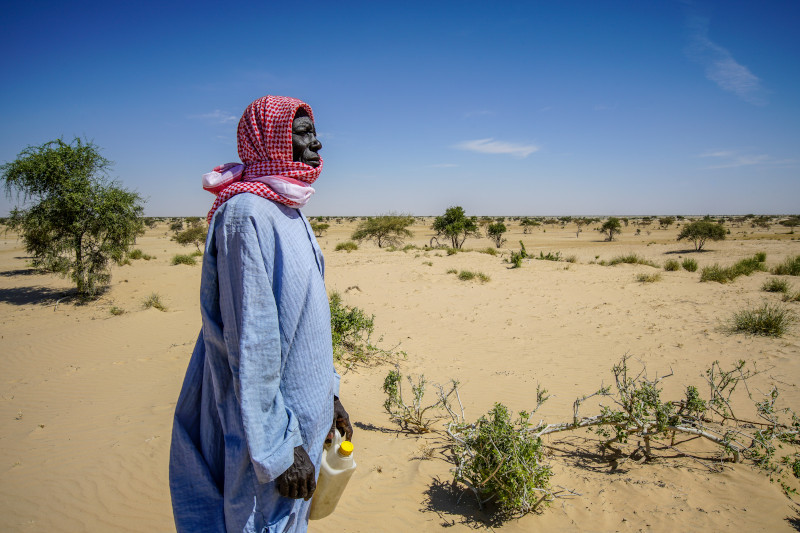Earth on edge: The answer to global green recovery and planetary health lies in our relationship with land
May 9, 2022

“Land. Life. Legacy": The 15th Conference of the Parties (COP15) to the UN Convention to Combat Desertification is one of three pivotal meetings this year tackling planetary health.
Over the past two years, the COVID-19 pandemic has changed life as we know it around the world. Evidence from scientific studies indicates that the pandemic is an outcome of a zoonotic infection, one that spreads between humans and animals. The emerging drivers of zoonotic diseases are all linked to humanity’s relations with one thing – nature – in particular the conversion and alteration of land and natural ecosystems.
At a time of mounting crises, further accelerated by the war in Ukraine, we face a closing window of opportunity to tackle the interrelated planetary crises: climate, biodiversity and land degradation. Our response to these crises must be based on the notion that these are not either/or demands on our time or resources. We must rise to meet all crises with urgency.
The year 2022 is critical in this sense. This week I am with delegates and participants from 196 countries in Abidjan, Cote d’Ivoire, for the fifteenth session of the Conference of the Parties (COP15) to the United Nations Convention to Combat Desertification under the theme of “Land. Life. Legacy: From scarcity to prosperity”. This is the first of three pivotal meetings on planetary health this year, followed by COP15 on biodiversity in China and COP27 on climate in Egypt. It is vital that this first meeting on desertification and land degradation sets the tone for the rest of year and generates strong commitments to take decisive action for restoring planetary health.
And there is no lack of challenges: 40 percent of land under human use is now degraded, affecting half of the world’s population, and risking 50 percent (US$44 trillion) of global GDP. Over 1.3 billion people who rely on land for their livelihoods are trapped on degrading agricultural land. And an estimated 55 million people globally are affected by droughts every year, which threatens the livelihoods and food security of farmers, pastoralists, forest communities, Indigenous Peoples and local communities in nearly every part of the world.
On the other hand, taking action to restore land and ecosystems can generate great benefits across the 2030 Agenda and the Sustainable Development Goals (SDGs). The launch of the UN Decade on Ecosystem Restoration (2021-2030) is an important rallying call for restoration action. Between now and 2030, it is estimated that restoring 350 million hectares of degraded lands under the Bonn Challenge, one of the key global restoration commitments, could remove up to 26 gigatons of greenhouse gases from the atmosphere – close to almost half of the world’s emissions in 2019 – and return $9 trillion in ecosystem services. Additionally, avoiding land degradation through sustainable land management and restoration can generate up to $1.4 trillion per year of economic benefits. And investing in restoration will also help create meaningful jobs and provide secure livelihoods at a time when the over 100 million jobs lost in 2020 due to the pandemic have not all been recovered.
Africa holds the key to tackling many of these challenges. The continent’s extensive landmass, arable land, forests, rivers, grasslands and wild species are vital to global land restoration, reversing biodiversity loss and defeating the climate crisis. A number of countries are leading the way, showing that a different future is possible.
For example, Niger is supporting local communities and non-governmental organizations, working hand-in-hand with the United Nations Development Programme (UNDP), to better manage and conserve the natural resources of the Niger River basin to better control floods, droughts and pollution. This in turn will reduce pressure on soils, forests and biodiversity – and protect livelihoods.
In Ethiopia, agro-ecological interventions and water storage infrastructure have improved land productivity and resilience during dry periods. UNDP has supported this effort by working with pastoralist and smallholder farmer communities to rehabilitate degraded watersheds and improve productivity.
And in Cote D’Ivoire, communities in the village of Marchoux just outside of Abidjan, have restored hectares of degraded mangroves forest which acts as natural infrastructure against floods and strong winds that would otherwise batter this village and many others like it.
These examples of local action are important ahead of COP15 where the international community will consider how we can act on the commitment to restore one billion hectares of degraded land by 2030. A critical enabler is financial investment. Implementing current restoration commitments over the next 10 years is estimated to cost between $305 billion and $1.7 trillion. Getting there will require planning and partnerships that have the capacity to bundle different forms of capital and manage trade-offs to generate equitable restoration outcomes. Countries will need to ensure that their national and sub-national planning and budgeting frameworks, including those that are part of national COVID-19 recovery packages, create an enabling environment for land restoration investments and actions and remove barriers to such investments. Countries must also open-up opportunities to engage people and expertise from all sectors of society, including businesses and investors, small-scale producers, Indigenous Peoples and local communities, to effectively implement national restoration commitments.
As countries meet at COP15 to agree on drought and restoration action, UNDP, together with partners including UNEP and FAO, stands ready to support national governments, communities and other partners to move forward in implementing their drought and landscape restoration plans. Securing planetary health is possible: it comes down to the choices we make today for our future tomorrow.

 Locations
Locations